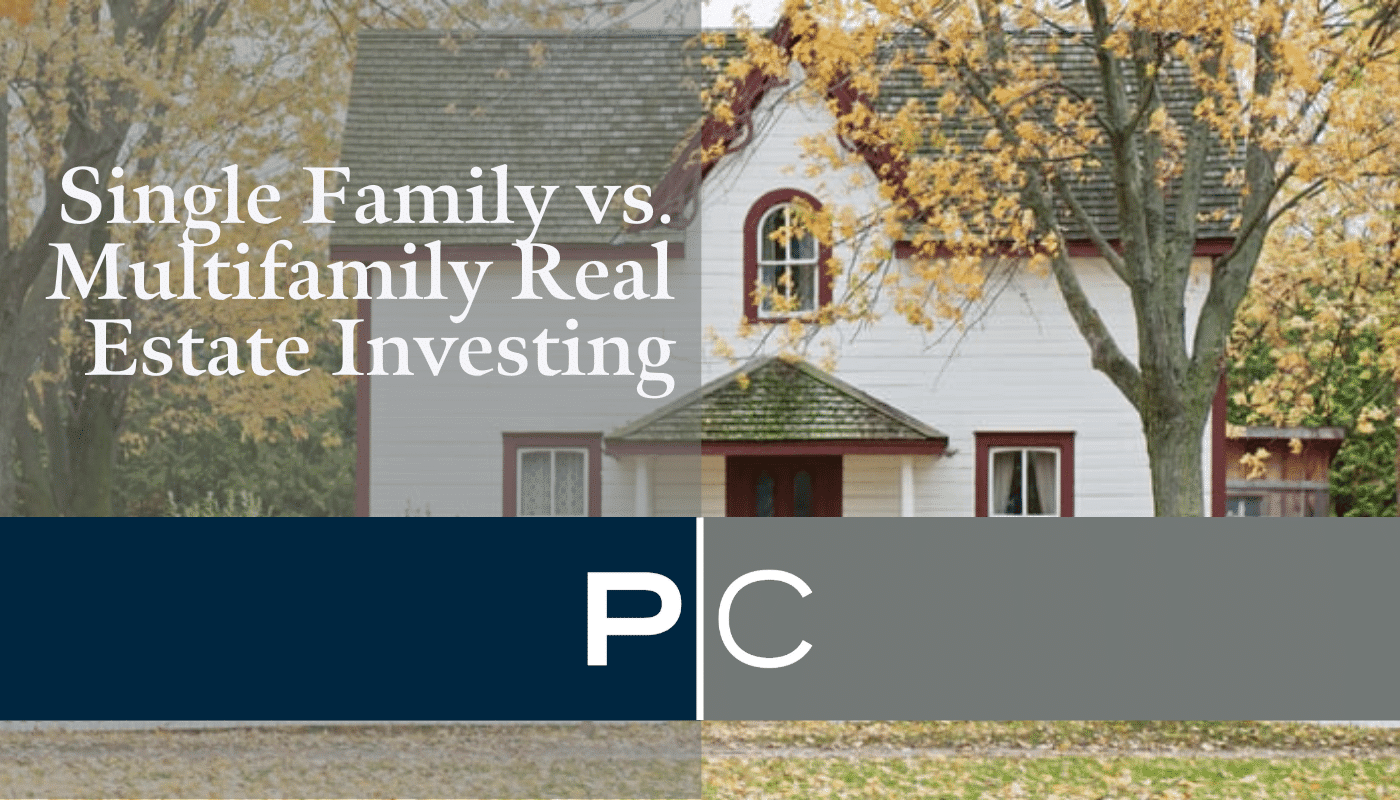Single Family vs. Multifamily Real Estate Investing
By Ed Rogan, Owner, Co-Founder

When someone has decided to invest in residential rental property, they often struggle with an important first decision: should I invest in single family homes or multifamily? Which is better?
There’s no one-size-fits all approach. Indeed, both strategies can be lucrative. Yet, as is the case with any type of investment, this decision depends on your personal goals. Are you investing for cash flow? Appreciation? Or some combination of both? The latter is what ultimately leads to the strongest overall returns.
Market and location also matters. Where are you planning to invest? Single-family homes in some markets are simply too expensive to justify the rents needed to make them valuable investments. For example, a single-family home that sells for $500,000 will need to be rented for at least $2,500 per month (assuming a 4.5% interest rate) – and that’s before taxes, insurance, repairs and maintenance. You may need to generate at least $3,000 a month in rent before even turning a profit.
Single-family rentals (SFRs) tend to be much more lucrative, from an investment perspective, in lower-cost markets where homes trade for under $200,000. Understanding the nuances of your target market is the first step in determining whether to invest in SFRs versus multifamily properties.
There are some other differences between SFRs and multifamily properties to consider. We outline the pros/cons of each below.
Single-Family Rentals (SFRs)
One of the biggest benefits to investing in SFRs is the low barrier to entry. Let’s assume you want to buy a property for $150,000. Most lenders will want you to put down 20% for non-owner-occupied properties. This means you’re only having to come up with $30,000 – not an insignificant amount of money, but something that is certainly manageable for most investors. Multifamily properties tend to be more expensive, and therefore, have more substantial down payment requirements.
SFRs are also a great way for first-time investors to dip their toes into the real estate waters. It allows them to learn the ins-and-outs of the rental property business, from marketing and leasing a property to day-to-day management. Starting small helps to limit potential risk.
Another benefit of owning SFRs is that the pool for both potential renters and later, potential buyers tends to be strong. SFRs are often more attractive to tenants, particularly in suburban markets where qualified residents want to live in established neighborhoods with good schools, low crime and robust amenities. Tenants are often drawn to having their own yard space, garage parking, and extra square footage.
Meanwhile, upon sale, the pool of potential buyers is typically robust given demand from both investors and owner-occupants. Investors can usually sell single-family homes relatively quickly given the diverse range of potential buyers.
The primary issue with single-family rentals, though, is scalability. Owning one or two, even ten SFRs can be manageable. However, the costs associated with operating a larger portfolio of SFRs tends to increase over time. We’ll cover this in more detail below.
Sign up to receive our educational newsletter and to gain exclusive access to our next investment opportunity.
Multifamily Rental Properties
SFRs are a great way for real estate investors to get started, but those looking to scale their investment portfolio will certainly want to look at multifamily. Multifamily properties can range in size, from two units to 200+ unit apartment communities. Typically, the more units, the more expensive the property will be which presents a barrier to entry for some. That said, those who can overcome this barrier will find there to be tremendous benefits to owning multifamily real estate.
One of the largest benefits to owning multifamily is that the costs are shared across multiple units. Let’s start with transaction costs. When buying a single-family home, you still need to pay for an inspection, attorney fees, title insurance, and other closing costs. When you buy a multifamily home, you still incur all of these one-time costs, yet the cost per unit is significantly lower. You’d have to pay all of those costs ten times over to buy ten SFRs vs. paying those costs once for a 10-unit building.
The same principle holds true when considering operating expenses, such as marketing, leasing and repairs and maintenance. It is much easier to market and lease up several units in one building than it is a portfolio of disparate SFRs. It’s much easier to maintain a single roof above a 20-unit building than it is 20 separate roofs in different locations. Simply put, there are tremendous operational efficiencies to owning multifamily properties. Larger properties (e.g., those with 100+ units) can even benefit from having on-site leasing teams and on-site property managers, which bring down total operational costs (again, on a per-unit basis).
Multifamily rentals also provide some insulation against vacancy. Regardless of property type, rentals inevitably turn over. When a unit becomes vacant (or related, if a tenant were to stop paying rent for some reason), it is much easier to endure a disruption in cash flow at a multifamily property when you have consistent rents coming in from the other units. Multifamily properties generally have stronger cash flow to support debt service, which is critically important in the case of an unexpected vacancy.
Lastly, multifamily properties tend to qualify for better financing terms. Lower interest rates, at better terms can result in higher cash-on-cash returns. For example, a bank is much more apt to offer an interest-only period on a commercial loan than they would be on a personal loan used to finance the purchase of a single-family home. Even a 50-basis point difference can result in hundreds of dollars of positive cash flow when investing in rental property.
Conclusion
To be sure, both single-family rentals and multifamily can be equally great investments. It really depends on an investor’s personal objectives and the dynamics of the markets in which they’d like to invest. When making this decision, consult with people you trust – whether that be a real estate broker who knows your market, a tried-and-true property manager, or other like-minded investors in your area.
RELATED ARTICLES
5 Keys to Investing in Distressed Real Estate
5 Keys to Investing in Distressed Real Estate By Ed Rogan, Owner, Co-Founder Buying distressed real estate certainly isn’t for the faint of heart. An inexperienced investor can easily be swayed by the promise of a project sponsor who doesn’t actually have a plan for turning the property around. But that doesn’t mean you shouldn’t…
READ MORE >Gaining an Edge through Cold Calling
Gaining an Edge through Cold Calling By Ed Rogan, Owner, Co-Founder In many ways, commercial real estate is an “eat what you can kill” industry. The most successful investors, developers, brokers and other CRE professionals earn their living by scouring the market to uncover the next big deal. Ask the industry’s best and they’ll often…
READ MORE >Trial by Fire: How We Got Started
Trial by Fire: How We Got Started By Ed Rogan, Owner, Co-Founder People often use the term “trial by fire” to explain how they learned something. In our case, the term is all too appropriate. Looking back on it, the story of how Percy and I got started almost seems unbelievable. We were just…
READ MORE >


